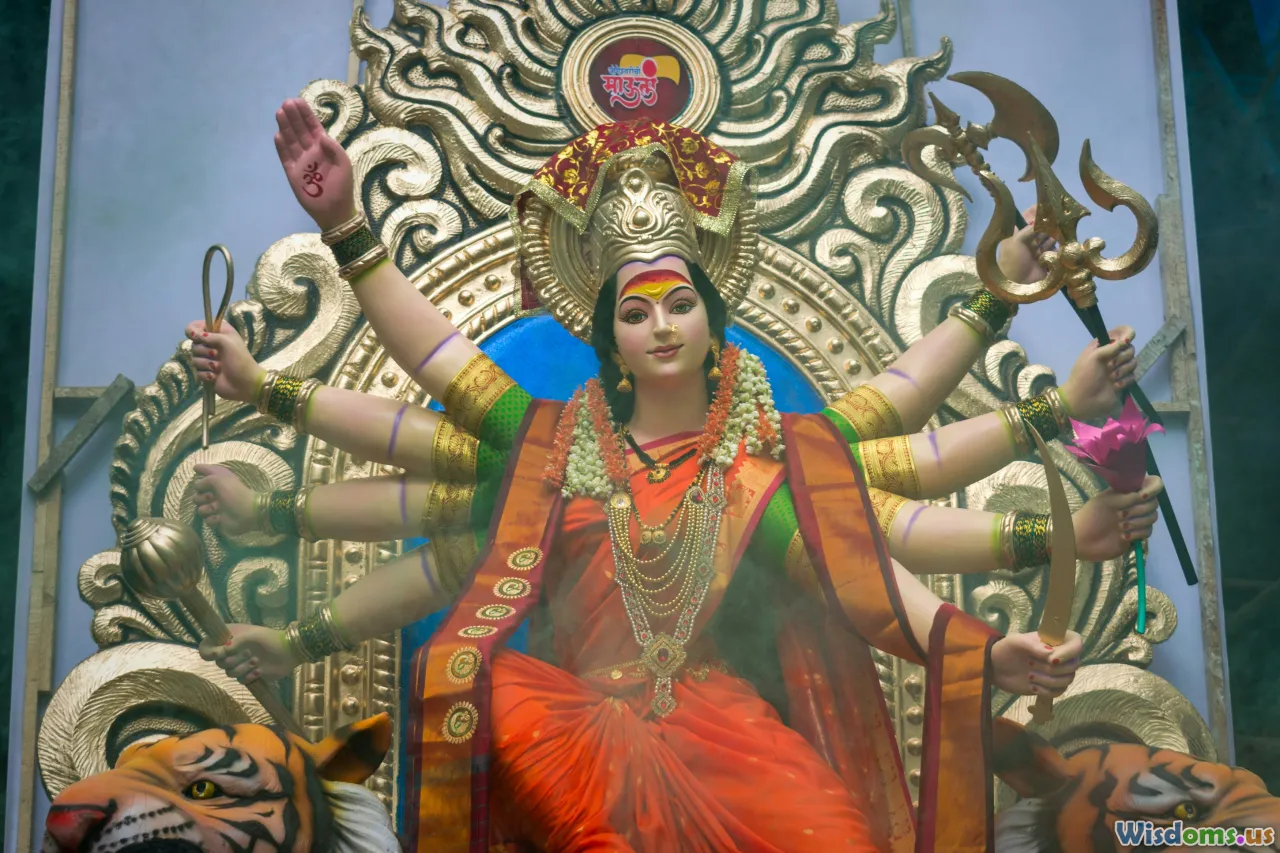
How the Illuminati Influences Pop Culture and Modern Conspiracy Theories
9 min read An in-depth exploration of the Illuminati's lasting impact on pop culture and conspiracy theories worldwide. (0 Reviews)
How the Illuminati Influences Pop Culture and Modern Conspiracy Theories
Introduction
From mysterious symbols etched into music videos to fringe theories whispered across the internet, the Illuminati has become one of the most emblematic names connected with power, secrecy, and control. Originating in the late 18th century as a secret society founded in Bavaria, the Illuminati’s historical existence was brief, yet the mythos surrounding it has burgeoned into a cornerstone of global conspiracy thinking and a pervasive influence on popular culture. This article delves beneath the surface to explore the many ways the Illuminati has shaped pop culture narratives and fueled contemporary conspiracy theories—a phenomenon as fascinating as it is complex.
The Historical Genesis of the Illuminati: Fact vs. Fiction
Understanding the current cultural role of the Illuminati requires a brief look at its origins. Founded in 1776 by Adam Weishaupt, a professor of canon law, the Bavarian Illuminati aimed to promote Enlightenment ideals: reason, secularism, and liberty against religious and political oppression. Despite the group's dissolution by 1785 due to political pressure, the concept of a clandestine organization exerting hidden control captured imaginations and morphed over centuries into something vastly mythologized.
Historical Reality
- Founding principles: rational thought, anticlericalism, and social reform.
- Membership: Included intellectuals, politicians, and freethinkers.
- Dissolution: Banned and suppressed, yet rumors about survival and influence persisted.
Evolution into Modern Myth
The connection of the Illuminati from this historical group to all-encompassing conspiracy theories is tenuous and speculative but persistent. The blending of fact, speculation, and creative storytelling helped transform the Illuminati into a symbol for hidden elites pulling strings behind the scenes.
Illuminati Symbols and Their Presence in Pop Culture
One of the fascinating aspects fueling belief in Illuminati influence is symbolism. Various symbols have been connected—rightly or wrongly—to the Illuminati and appear frequently in pop culture.
The Eye of Providence
The 'All-Seeing Eye,' depicted on the US one-dollar bill, is often cited as Illuminati symbolism. Despite its origins in Christian iconography representing God's watchfulness, conspiracy theorists interpret it as proof of covert control.
The Pyramid
The pyramid shape is another heavily exploited image. Its incomplete form with the floating eye above has been adopted in album covers, movies, and advertisements to evoke mystery or subliminal control.
Numerical Symbolism
Numbers like 13 and 666 are frequently linked with Illuminati theories and often appear in media, from pop music to blockbuster movies, reinforcing narratives of secret cabals.
Notable Examples in Media
- Music Videos: Artists like Beyoncé, Jay-Z, and Rihanna have been accused of embedding Illuminati references in their work, such as hand signs resembling triangles or pentagrams, fueling fan speculation.
- Film and TV: Movies like "The Da Vinci Code" and series such as "The X-Files" incorporate themes of secret societies and clandestine operations that echo the Illuminati mythos.
The Illuminati’s Role in Modern Conspiracy Theories
Contemporary conspiracy theories have seized upon the Illuminati narrative to explain complex social and political phenomena.
The Deep State and Global Control
Many theories claim the Illuminati forms part of a 'deep state' controlling governments, economy, and media. This narrative often capitalizes on public distrust, especially amid political scandals and economic crises.
Celebrities as Illuminati Puppets or Members
The pop culture obsession with celebrities allegedly connected to the Illuminati reflects anxieties about fame and influence. Theories suggest stars join the society to skyrocket to success, trading freedom for fame.
Political Impact and Real-World Consequences
While largely unfounded, these conspiracy theories have sometimes impacted political discourse and policies, influencing voters’ perceptions and media reporting.
Sociological Implications: Why Does the Illuminati Myth Persist?
The sustained popularity of these ideas is not merely about secret societies but taps into deeper societal needs and fears.
Psychological Comfort in Chaos
In an increasingly complex and fast-changing world, conspiracy theories provide simplistic explanations for troubling phenomena, offering a sense of control or understanding.
Distrust in Authority Institutions
Historical abuses, such as Watergate or financial scandals, erode trust in establishments, creating fertile ground for theories that powerful hidden groups manipulate events.
Pop Culture as Amplifier
Entertainment media and the internet amplify and perpetuate these themes, often blurring lines between fiction and reality to a mass audience hungry for mystery and intrigue.
Case Studies: Illuminati Influence in Notable Incidents
The Illuminati and the Music Industry
Pop music’s frequent use of Illuminati imagery isn’t just coincidence. Artists and marketers tap into the sensationalism, creating buzz that fuels discussions and attention.
- Example: Jay-Z's hand gestures forming triangles during performances have sparked widespread debate over supposed Illuminati allegiance.
- Analysis: Some industry insiders claim these symbols are marketing tools rather than genuine affiliations.
Political Theories: The Obama Illuminati Myth
During President Barack Obama's terms, conspiracy theories suggesting his ties to the Illuminati circulated widely on social media and fringe forums. This phenomenon highlighted how political figures become focal points for such narratives.
The Role of the Internet�27s Echo Chambers
Social media platforms and online communities accelerate the spread of Illuminati-related theories. Algorithms often create feedback loops that reinforce and radicalize beliefs through selective information exposure.
Critical Analysis: Separating Fact from Fabrication
Given the persistent blending of fiction and reality, it's essential to critically evaluate Illuminati claims.
Lack of Empirical Evidence
No documented evidence supports the existence of a currently active Illuminati manipulating world events. Scholars emphasize examining sources and differentiating historical records from conjecture.
The Danger of Misinformation
While entertaining, these theories can foster paranoia, misinformation, and sometimes prejudice, diverting attention from real social issues.
Conclusion: Illuminati's Enduring Legacy in Culture and Thought
The Illuminati’s imprint on pop culture and conspiracy theories exemplifies how myths evolve by intertwining history, media, and human psychology. Although the original secret society’s influence was limited and brief, the narrative it inspired continues to captivate—oscillating between entertainment and earnest belief.
Understanding this phenomenon allows us to appreciate the power of symbols, the complexity of societal fears, and the role of media in shaping modern myths. Whether as a marketing strategy or a manifestation of social anxieties, the Illuminati remains an indelible part of contemporary culture, encouraging ongoing dialogue about truth, power, and influence in our interconnected world.
By critically engaging with these narratives and their origins, readers can better navigate the complex interplay between myth and reality, fostering a more informed and discerning perspective on the forces shaping our culture.
Rate the Post
User Reviews
Popular Posts




















